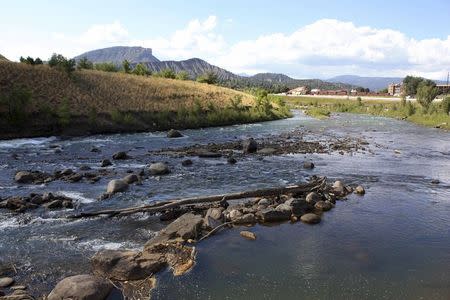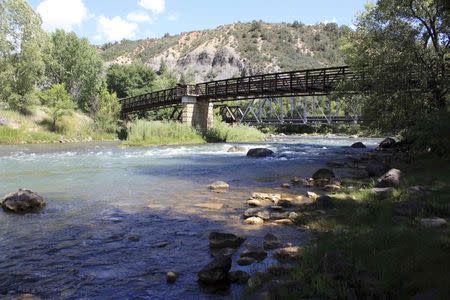EPA chief: Colorado river hit by mine waste back to pre-spill quality
By Lauren Hammond DURANGO, Colo. (Reuters) - The water quality of a southwestern Colorado river rendered bright orange by toxic waste spewed from an abandoned gold mine one week ago has returned to pre-existing levels, the U.S. Environmental Protection Agency chief said on Wednesday. The statement from EPA Administrator Gina McCarthy, whose agency's inspectors inadvertently triggered the spill during field work, came as Colorado health officials cleared the way for the city of Durango, just downstream, to reopen its drinking water intakes from the river. McCarthy also ordered the EPA's regional offices to immediately cease any further field inspections of mines or mine waste sites, except in cases of imminent risk of danger, while an independent review of last week's accident is undertaken. More than 3 million gallons (11.3 million liters) of acid mine sludge were accidentally discharged by the EPA inspectors on Aug. 5 from the site of the century-old Gold King Mine near Silverton, Colorado, into a stream just below the mine called Cement Creek. "The EPA does take full responsibility for the incident," McCarthy said during a visit to Durango, a resort town popular for its rafting and kayaking about 50 miles (80 km) south of the spill site on the Animas River, which was the hardest hit. The creek feeds the Animas, which in turn flows farther south into the San Juan River, a Colorado River tributary that winds through northwestern New Mexico into Utah and ultimately joins Lake Powell. The EPA has previously said that state, local and federal authorities had agreed to keep the Animas and San Juan rivers closed to all fishing, recreation and intakes of water for drinking and irrigation until at least Aug. 17. But McCarthy said that with water sample tests showing that traces of heavy metals and other contaminants in the Animas had returned to pre-spill levels the EPA would leave it up to state and local governments to decide when to lift river restrictions. "We let the science be our guide and we work with our partners," she said. Colorado Governor John Hickenlooper had said earlier in the day that contamination appeared to have largely dissipated with no sign of lasting environmental harm, though EPA officials and toxicologists have warned that long-term effects of the spill remain to be seen. Dilution has gradually diminished concentrations of contaminants such as arsenic, mercury and lead. But experts say deposits of heavy metals have settled into river sediments, where they can be churned up and unleash a new wave of pollution when storms hit or rivers run at flood stage. Besides metals that are outright toxic to aquatic life, the iron compounds that turned the water orange can smother plants and habitat as they sink to the bottom. (Reporting by Keith Coffman from Denver; Writing by Steve Gorman; Editing by Sandra Maler)





